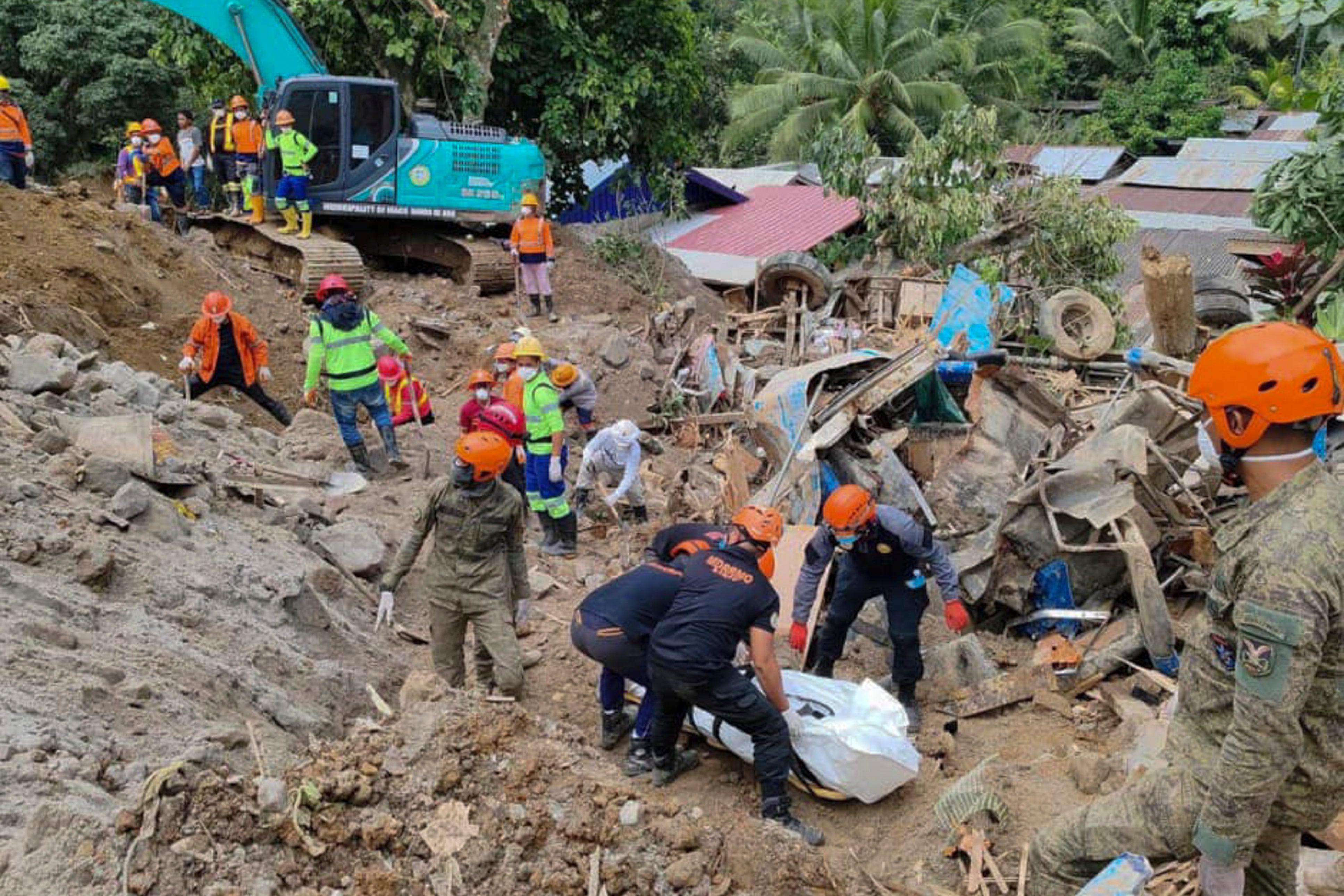Death toll from Philippines landslide climbs to 68 as hope fades for survivors
More than 51 people still missing as authorities plan to shift focus to search and retrieval
Your support helps us to tell the story
This election is still a dead heat, according to most polls. In a fight with such wafer-thin margins, we need reporters on the ground talking to the people Trump and Harris are courting. Your support allows us to keep sending journalists to the story.
The Independent is trusted by 27 million Americans from across the entire political spectrum every month. Unlike many other quality news outlets, we choose not to lock you out of our reporting and analysis with paywalls. But quality journalism must still be paid for.
Help us keep bring these critical stories to light. Your support makes all the difference.
The death toll from a massive landslide in southern Philippines has risen to 68 with 51 people still missing, said officials on Monday.
The landslide hit the mountain village of Masara in Davao de Oro province on 6 February after weeks of torrential rains. It struck outside a gold mine in Maco town in Davao de Oro province, and buried homes and vehicles that were supposed to ferry employees of the mining company.
The authorities plan to shift the focus from search and rescue to search and retrieval beginning on Tuesday, Maco town disaster officer Ariel Capoy said.
A three-year-old girl was the last person rescued after nearly 60 hours of being trapped under rubble and mud. At the time, her rescue gave hope to the workers but it seems to be fading since.
“It is almost a week after the incident and... we are assuming that no one is alive there," Edward Macapili, a disaster agency official, told AFP news agency. "There is already a foul smell in the area now so there’s a need to fast-track the retrieval."

Even though over 300 people were involved in rescue operations, the process was being hampered by thick mud, heavy rain, damaged communication lines, and the threat of further landslides, officials said.
Rains have led to tens of thousands of residents moving to emergency shelters.
Heavy rainfall, mountainous terrain, and deforestation from mining have made the islands prone to landslides.
More than 1,100 families have been moved to evacuation centers for their safety, disaster response officials said earlier.
The area has been swamped by heavy rains in the weeks before the landslide struck. Earthquakes also damaged houses and buildings in the region in recent months, officials said.
The US, through the US Agency for International Development, was providing US$1.25m humanitarian aid to the affected communities in the southern islands, its embassy in Manila said in a statement.
The US Defense Department also provided two C-130 cargo planes to help deliver food packs to the affected communities.
Additional reporting by agencies

Join our commenting forum
Join thought-provoking conversations, follow other Independent readers and see their replies
Comments